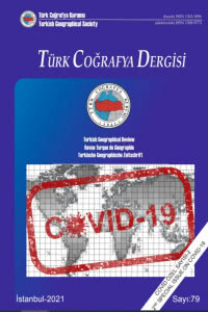GPR / GPS combinaƟon in 3-D modeling of buried objects
Bu çalışmanın amacı sığ jeofizik görüntüleme ve uzaktan algılama teknolojisi olan GPR yöntemini etkileyen parametrelerden topoğrafik değişkenliğin ölçme sonuçlarına etkisini belirlemek ve söz konusu GPR ölçmelerinde arazi eğiminin sebep olduğu sistema?k olmayan hatanın ortadan kaldı- rılması problemine Geoma?k/Harita Mühendisliği disiplini içerisinde ölçme tekniğinin güncel metot ve teknolojilerini kullanarak çözüm bulabilmek?r. Günümüzde yaygın olarak kullanılan GPS teknolojisi ile elde edilecek topoğrafik verilerin GPR ölçmeleriyle eşzamanlı olarak toplanması ve birlikte yorumlanması ile GPR ölçmelerinde arazi eğiminden kaynaklanan hatanın giderilmesinin mümkün olduğu düşünülmektedir. Yerli veya yabancı literatürde GPR-GPS kombinasyonundan oluşan metodolojiyi konu alarak; Klasik GPR ölçme tekniği ile GPR-GPS kombinasyonunun, boyutları önceden bilinen gömülü referans obje üzerinden karşılaş?rmalı olarak analiz edildiği herhangi bir akademik çalışma bulunmamaktadır. GPR - GPS kombinasyonundan oluşan metodun performansının test edilebilmesi için boyutları önceden bilinen gömülü obje referans alınarak klasik GPR ölçmeleri ile elde edilen 3D model ve GPR-GPS kombinasyonundan elde edilen 3D model, referans objenin gerçek boyutlarıyla karşılaş?rılmış?r. Klasik GPR yöntemi sonuçları, GPR-GPS kombinasyonu sonuçlarıyla karşılaş?rıldığında hem düz ve hem de eğimli arazide GPS-GPR yönteminin daha duyarlı yatay nokta konum hatası üre?ği belirlenmiş, yatay nokta konum hatasının eğimli arazi türünde %28,2 civarında küçüldüğü/iyileş?ği gözlemlenmiş?r
Gömülü objelerin 3-B modellenmesinde GPR/GPS kombinasyonu
The objecƟve of this study is defining the effect of topographic slope differences, as being one ofthe parameters that affect GPR -a near surface geophysic and remote sensing technology, on measurementresults, and to find out a soluƟon to the problem of the unsystemaƟc error resulted fromslope area on GPR measurements with in the discipline of GeomaƟc Engineering by using recentsurvey methods and technologies. It is considered that it is possible to eliminate the errors resultedfrom area slope differences via GPS as being a widely used technology to acquire topographic data,by collecƟng and evaluaƟng the relevant data simultaneously. Taking into consideraƟon the methodologythat objects the combinaƟon of GPR-GPS in local and foreign literature; there is not suchan academic aƩempt to study the combinaƟon of GPR-GPS comparaƟvely with classical GPR surveytechnique, thorough the buried reference object of which dimensions are known in advance. Inorder to test the performance of the method derived from the combinaƟon of GPR-GPS combinaƟon,buried object, of which dimensions are known in advance, will be considered as a reference,then two models of 3D; one 3D model that is provided by classical GPR survey sand another 3Dmodel that is provided by the combinaƟon of GPR-GPS, was compared with the actual dimensionsof the object. When comparing the results of the tradiƟonal GPR survey with those of the GPR-GPScombinaƟon, it has been noted that the GPR-GPS method produced beter horizontal point posiƟoningprecision, and the horizontal posiƟoning uncertainty was improved about 28,2% for slope landtypes.
___
- Alp, İ. Gelişli,K. Yılmaz, A.O., Kaya, R., Çavuşoğlu, İ., (2003). Mermer İşletmeciliğinde Yer Radarı Uygulamaları.
- Conyers, L.B., 2013. Ground-PenetraƟng Radar for Archaeology, 3rd ed.; Rowman and LiƩlefield Publishers, Alta Mira Press: Latham, MD, USA, ISBN: 9780759123496.
- Dannowsky, G.,and Yaramancı, U., 1999. EsƟmaƟon of water content ant porosity using combined radar and geoelectric measurements. European Journal of Environmental and Engineering Geophysics, 4,71-85.
- Davis, J.L.,and Annan, A.P., 1989. Ground PenetraƟng Radar for high resoluƟon mapping of soil and rock straƟgraphy. Geophysical ProspecƟng, 37, 531-551.
- Goodman D., Piro S., 2013. GPR remote sensing in Archeology, Geotechnologies and the environment, Springer Heidelberg New York Dordrecht London, ISBN 978-3-642-31857-3 (eBook).
- Grandjean, G.,andGourry, J.C., 1999. GPR data processing for 3D fracture mapping in a marble quarry (Thassos, Greece). Journal of Applied Geophysics, 36, 19-30.
- Green, A.,Gross, R., Holliger, K., Horstmeyer, H., andBaldwin, J., 2003. Results of 3-D georadar surveying and trenching the San Andreas fault nearits northern land ward limit. Tectonophyisics, 368, 7-23.
- Harrari, Z., 1996. Ground penetraƟng radar (GPR) for imaging straƟ- grafic features and graund water in sand dunes. Journal of Applied Geophysics, 36, 43-52.
- F. Lehmann and G. Green, 1999 –Semiautomated georadar data acquisiƟon in three-dimensions. Geophysics 64 (3):719-731
- J. Sun and A. Young, 1995 - ScaƩering in ground-penetraƟng radar data. Geophsica 6 (5): 1378-1385.
- Jol H. M., 2009. Ground PenetraƟng Radar Theory and ApplicaƟons, Elsevier Books, Oxford, UK.
- Persico R., 2014. IntroducƟon to Ground PenetraƟng Radar (Inverse ScaƩering and Data Processing)- Wiley-IEEE Press – ISBN 978-1- 118-30500-3, s. xiii
- Sandmeier, K.J., 2004. ScienƟfic SoŌware, REFLEX-W ver.3.5 program for processing and interpretaƟon of reflecƟon and transmission data.
- Van Dam, R. I And W. Schlager, 2000 - IdenƟfyingcauses of ground-penetraƟng radar reflecƟonsusing Ɵme-domain reflectometryandsedimentologicalanalysis. Sedimentology 47: 435-449.
- ISSN: 1302-5856
- Yayın Aralığı: 2
- Başlangıç: 1943
- Yayıncı: Türk Coğrafya Kurumu
